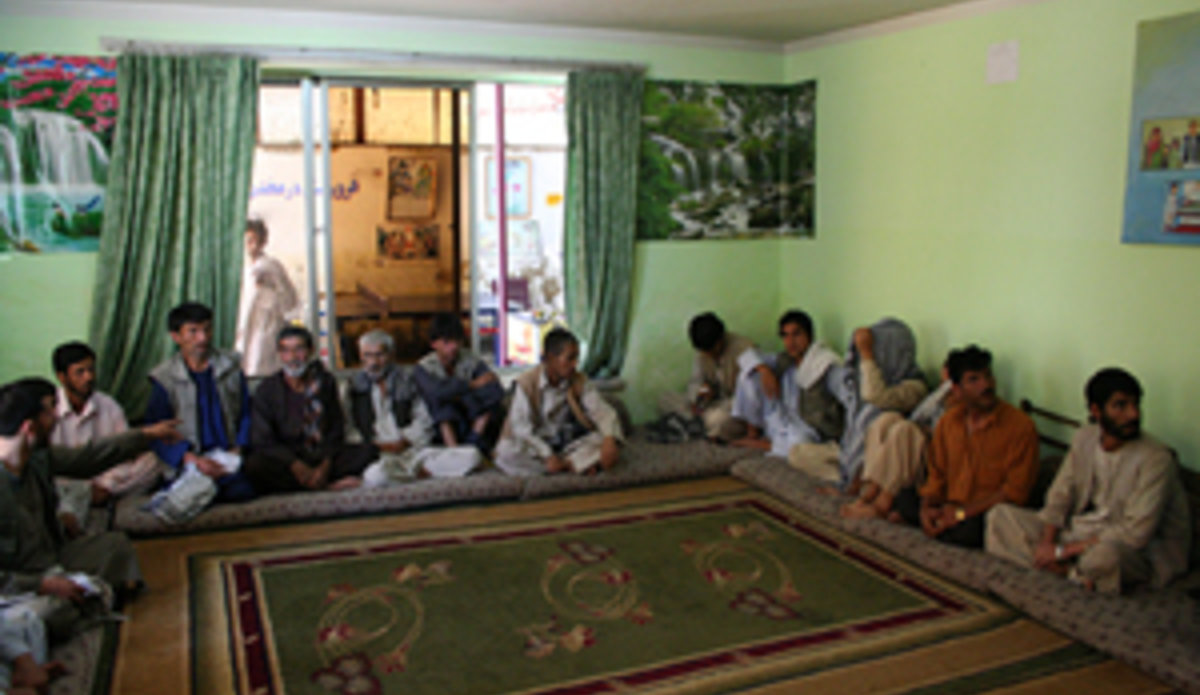Kabul's drug addicts offered chance to get clean
KABUL - Mohammad Nayim, a thirty-nine-year-old former soldier from Kabul, lifts his left trouser leg without warning to reveal a Jaipur foot.
The recovering heroin addict lost his limb in a landmine accident while fighting for the Mujahadeen and remembers that he turned to the deadly drug soon afterwards – to ameliorate the pain and help "deal with several social problems."
But, beginning tomorrow, Mr Nayim, who looks much older than his years, hopes to put that life behind him. It's also a significant day that he has chosen to kick the habit: International Day against Drug Abuse and Illicit Drug Trafficking.
He's now spent two weeks, clean at Nejat, Kabul's first drug rehabilitation centre that is supported by the United Nations Office on Drug and Crime (UNODC), and will leave its salubrious surroundings soon to re-join society.
"I'm happy that I came here," he says in Dari. "We had to go through strict rules and regulations during the programme. But I am seeing the results!"
Of course, nobody knows better than Dr Tariq Suliman, the centre's director, that the battle to stay away from heroin has just begun for Nayim; recidivism is high in this part of the world and chances are he could be back soon, to restart the whole process.
"Only 20 to 25 per cent of people succeed in preventing a relapse. The success rate is 75 per cent in Pakistan because former addicts return to their communities. Our patients come from as far as Helmand and Mazar and it’s difficult to follow them. But most importantly, in Kabul we don't have intensive vocational training programmes, and many of the former drug users don't find work and go back to drugs," says Dr Suliman.
In order to ensure they remain drug-free, Nejat offers vocational training to inmates in areas such as football-making, cookery and hair-cutting. Together with this, the centre, which was first established in Pakistan in 1991, has various programmes at its 10 and 50-bed facilities in Kabul that focus on motivation, awareness and prevention.
Today, Rehmatullah is one of 70 men who has turned up to attend phase-one of the rehabilitation process. Possibly the youngest member of the group, at 18 years old, he sits cross-legged, in a large room, his hollow eyes transfixed on a Bollywood film, his face unmoved and expressionless. He first came to Nejat from Pakistan two weeks ago, he tells UNAMA through a translator, where he would smoke heroin with his family, using the little money he earned from selling garbage.
For now, Rehmatullah comes to the centre every morning and remains until the afternoon, during which Dr Suliman's team will try to motivate him, over a period of up to three months, to lower, or, possibly, eliminate, his drug consumption. If he survives that, he will, like Nayim, undergo detoxification and live at the facility for two weeks. "When I first came here, I used to buy heroin worth 100 Afghanis (US$2) every day. I need only half of that now, and only once a day," he claims.
Not far away from Nejat, is the famous Russian Cultural Centre – a dilapidated, Soviet-era structure, built in the 1980s to strengthen relations between Kabul and Moscow – where Rehmatullah often goes to smoke in the evening along with friends. Once popular for the arts, the vestiges of its grand past, until a recent government crackdown, provided a safe refuge to at least 600 addicts, who used the rooms and the many crevices, to consume and peddle drugs.
Upon arriving at the Russian Centre, one instantly understands why people like Rehmatullah and Nayim do not want to revisit their sordid pasts. Although the place is bereft of activity today, there are signs of recent occupation. The numbing smell and presence of excreta is overwhelming. Used aluminum foil wrappers, broken syringes, and boxes of 'Pleasure' cigarettes lie scattered on the floor, next to rubble, soiled bed sheets, and discarded clothing. The lower halves of most walls are tainted by the black smoke, produced when heroin is burnt with sugar.
"They even hide here sometimes," says a security guard, who volunteers to show us around, pointing to a partly-open sewer that runs roughly two metres deep into the ground. "But many of them are now at Jangalak," he continues, referring to the other centre – with a 100 bed capacity – that is jointly managed by Nejat and Wardaan, another NGO.
Back, at the rehabilitation centre, Dr Suliman speaks to his inmates about the significance of World Drug Day. This is our day, he tells the soon-to-be-discharged men. Then turning to this reporter, he laments: "It should be celebrated like a national day. Functions are organised in hotels …by the government or some organisations. They should instead go on the streets or to communities with their message."
True, but if Afghanistan's estimated one million drug users, including Rehmatullah, are to be saved, it will need a greater effort than that.
26 June is observed as the International Day against Drug Abuse and Illicit Drug Trafficking.
By Aditya Mehta, UNAMA
 UN
UN







